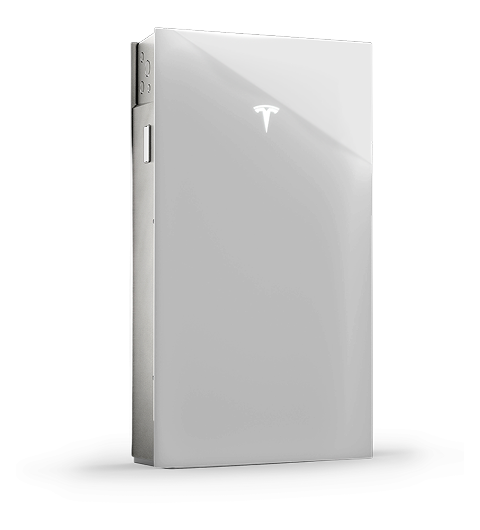How Many Tesla Powerwall 3’s Do I Need for My AZ Home?
How Many Tesla Powerwall 3’s Do I Need for My AZ Home?
Updated: November 26, 2025
Arizona homeowners are increasingly turning to battery storage to maximize their solar investment and protect against power outages. The Tesla Powerwall 3 offers advanced energy storage capabilities, but determining the right number for your home requires careful consideration of your energy consumption, solar production, and backup power goals.
This comprehensive guide will help you calculate exactly how many Tesla Powerwall 3 units you need to power your Arizona home effectively. But before diving in, let’s take a closer look at the key factors that influence your battery storage requirements. From there, we’ll walk you through practical examples for different home sizes and energy usage patterns to make sure you have all the information you need.
If you have any questions about Tesla Powerwall 3, contact Solar Topps to receive a Residential or Commercial Quote.
Understanding the Tesla Powerwall 3 Specifications
The Tesla Powerwall 3 delivers significant improvements over previous models, making it an excellent choice for Phoenix, Arizona, homeowners seeking reliable energy storage. Each unit provides 13.5 kWh of usable energy storage capacity with 11.5 kW of continuous power output and 185 LRA motor starting capability.
Key Technical Specifications:
- Storage Capacity: 13.5 kWh per unit
- Continuous Power Output: 11.5 kW
- Peak Power Output: 22 kW (10 seconds)
- Round-trip Efficiency: 90%
- Operating Temperature Range: -4°F to 122°F (ideal for Arizona climate)
- Warranty: 10 years
These specifications make the Powerwall 3 well-suited for Arizona’s extreme temperatures and high energy demands during peak cooling seasons.
Calculating Your Arizona Home’s Energy Consumption: How Many Tesla Powerwall 3 Do I Need?
Your daily energy consumption forms the foundation for determining how many Powerwalls you need. Arizona homes typically consume more electricity than the national average due to extensive air conditioning use during the hot summer months.
Average Energy Consumption by Home Size in Arizona:
1,500-2,000 sq ft homes: 25-35 kWh per day
2,000-2,500 sq ft homes: 35-45 kWh per day
2,500-3,000 sq ft homes: 45-55 kWh per day
3,000+ sq ft homes: 55-70+ kWh per day
These estimates can vary significantly based on:
- Home insulation quality
- HVAC system efficiency
- Pool equipment operation
- Number of occupants
- Appliance efficiency ratings
How to Calculate Your Specific Consumption:
- Review 12 months of utility bills to identify your highest usage months
- Calculate the daily average by dividing the monthly kWh by days in the month
- Focus on the summer months (June-September) when consumption peaks
- Add 10-15% buffer for unexpected usage spikes
Solar Panel Output Considerations in Arizona
Arizona’s abundant sunshine makes it one of the best states for solar energy production. However, your solar output directly impacts how many Tesla Powerwall 3 Batteries you need. We are professional installers able to recommend all kinds of options for your Solar Energy System. While we serve the entire state of Arizona, we also serve the main cities of Phoenix, Scottsdale, Paradise Valley, Buckeye, Tucson, and other Phoenix Metro cities.
Typical Solar Production in Arizona Cities:
Phoenix/Scottsdale: 5.5-6.0 peak sun hours daily
Tucson: 5.8-6.2 peak sun hours daily
Paradise Valley: 5.5-6.0 peak sun hours daily
Buckeye: 5.6-6.1 peak sun hours daily
Gilbert: 5.4-5.9 peak sun hours daily
Solar System Sizing Examples:
A 6 kW solar system in Phoenix typically produces:
- Summer: 32-38 kWh per day
- Winter: 24-28 kWh per day
- Annual Average: 30-33 kWh per day
An 8 kW solar system in Tucson typically produces:
- Summer: 42-48 kWh per day
- Winter: 32-36 kWh per day
- Annual Average: 38-42 kWh per day
Tesla Powerwall 3 Calculation Examples for Arizona Homes
Example 1: Scottsdale Home (2,200 sq ft)
- Daily consumption: 40 kWh
- Solar system: 7 kW (35 kWh daily production)
- Net consumption: 5 kWh deficit
- Backup goal: 24 hours essential loads (15 kWh)
- Recommended Powerwalls: 2 units
Calculation: 15 kWh ÷ 13.5 kWh = 1.1 → rounded up to 2 units for optimal performance
Example 2: Paradise Valley Home (3,500 sq ft)
- Daily consumption: 65 kWh
- Solar system: 10 kW (50 kWh daily production)
- Net consumption: 15 kWh deficit
- Backup goal: 48 hours whole home (65 kWh × 2 days = 130 kWh)
- Recommended Powerwalls: 4-5 units
Calculation: 130 kWh ÷ 13.5 kWh = 9.6 → 4-5 units with solar recharging capability
Example 3: Buckeye Home (1,800 sq ft)
- Daily consumption: 30 kWh
- Solar system: 6 kW (30 kWh daily production)
- Net consumption: Break-even
- Backup goal: 12 hours essential loads (12 kWh)
- Recommended Powerwalls: 1-2 units
Calculation: 12 kWh ÷ 13.5 kWh = 0.9 → 1 unit sufficient, 2 units for redundancy
Tesla Generator Off-Grid Capabilities in Arizona
For Arizona homeowners looking to achieve complete energy independence and reduce reliance on the traditional power grid, installing multiple Tesla Powerwall 3 Batteries is a game-changing option. By combining cutting-edge technology with reliable performance, these batteries offer a comprehensive off-grid energy solution. With this setup, you can enjoy consistent power storage and usage, ensuring your home remains powered no matter what. However, to fully embrace true off-grid capability, you’ll need to consider the following requirements:
Minimum Off-Grid Requirements:
- 3-5 Powerwalls for average homes
- 5-8 Powerwalls for larger homes with pools
- Oversized solar system (125-150% of consumption)
- Smart load management systems
Off-Grid Considerations:
- Consecutive cloudy days: Plan for 3-5 days without solar input
- Seasonal variations: Size for lowest production months
- Equipment redundancy: Multiple units prevent single points of failure
How Long Will a Tesla Powerwall 3 Battery Last in a Power Outage?
The length of time your Tesla Powerwall 3 Batteries will be able to provide power during an outage depends on a variety of important factors that can significantly influence its performance and efficiency. To gain a clearer understanding of this, it is essential to take the following considerations into account:
Powerwall Duration by Load Type:
Essential Loads Only (8-12 kWh daily):
- 1 Powerwall: 24-40 hours
- 2 Powerwalls: 48-80 hours
- 3 Powerwalls: 72-120 hours
Reduced Whole Home (20-30 kWh daily):
- 1 Powerwall: 10-16 hours
- 2 Powerwalls: 20-32 hours
- 3 Powerwalls: 30-48 hours
Full Whole Home (40-60 kWh daily):
- 2 Powerwalls: 10-16 hours
- 3 Powerwalls: 16-24 hours
- 4 Powerwalls: 21-32 hours
Extending Powerwall Duration:
Managing energy during outages is crucial, and smart solutions can make a significant difference.
First, smart thermostat management allows you to raise AC settings during outages, helping to reduce energy consumption while maintaining comfort. This small adjustment can have a big impact. Next, load prioritization ensures that only essential loads are powered. By automatically shedding non-essential loads, you can conserve energy for what’s truly important during an outage. Additionally, solar recharging plays a key role. Using daytime solar power can significantly extend your system’s runtime, providing a reliable energy source while sunlight is available. Lastly, adopting conservation practices is vital. By reducing discretionary usage during outages, you can make the most of the energy you have and keep your system running efficiently.
Financial Considerations and Incentives for the Tesla Powerwall 3
The Tesla Powerwall 3 offers financing options, federal tax credits like the ITC, and state or local incentives to reduce upfront costs. Flexible payment plans are also available, making it a cost-effective investment for sustainable energy storage with long-term savings on energy bills..
Tesla Powerwall 3 Pricing:
- Equipment cost: $13,500 per unit
- Installation cost: $2,000-$4,000 per unit
- Total installed cost: $15,500-$17,500 per unit
Available Incentives:
- Federal Tax Credit: 30% of total system cost
- Arizona Tax Credit: Additional state incentives may apply
- Utility rebates: Some Arizona utilities offer storage rebates
- Time-of-use savings: Reduced electricity costs through load shifting
Return on Investment of the Tesla Powerwall 3:
The return on investment for a Tesla Powerwall 3 can vary based on individual energy usage and the availability of local incentives. These factors are crucial in determining how much you’ll save and how quickly the system pays for itself.
That said, on average, using a Powerwall 3 to shift energy consumption to off-peak hours can lead to significant savings. In fact, most users save between $2,000 and $5,000 annually in electricity costs. As a result, it’s an attractive option for those aiming to cut long-term energy expenses.
Additionally, the federal tax credit, combined with potential state and utility incentives, can significantly shorten the payback period. In many cases, homeowners can recover their investment in as little as 5 to 7 years, making the Powerwall 3 not only a sustainable choice but also a financially smart one.
Additional Considerations for the Tesla Powerwall 3:
The cost and incentives for the Powerwall 3 vary by location, so it’s important to research local options. It offers long-term energy savings as renewable energy grows and traditional energy costs rise. The Powerwall 3 provides reliable backup power during outages, protecting electronics and preventing food spoilage. Additionally, it supports sustainability by reducing carbon emissions and reliance on fossil fuels.
In Conclusion, Solar Topps Can Install Tesla Powerwall 3 Batteries
With years of experience and a strong commitment to quality, Solar Topps ensures a seamless installation of Tesla Powerwall 3 batteries for both residential and commercial customers. Moreover, our team of certified professionals takes the time to carefully assess your specific energy needs. As a result, we provide tailored solutions that not only maximize efficiency but also deliver significant cost savings. By choosing Solar Topps, not only do you gain access to top-tier products, but you also benefit from reliable service and ongoing support. With these advantages, you can ensure your energy storage system operates at its best. Ready to take the next step? Contact us today to learn more about how the Tesla Powerwall 3 can revolutionize your energy management.














